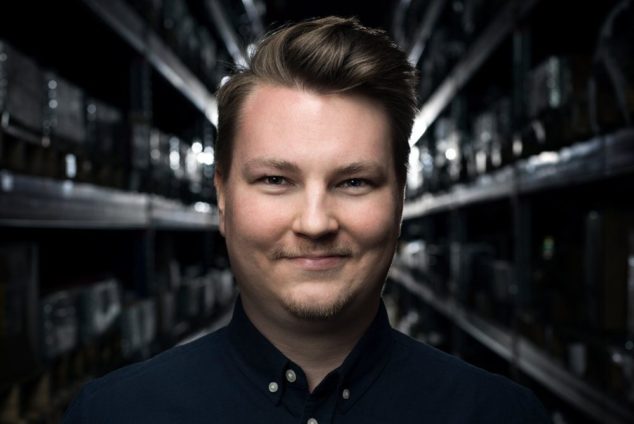Once the exclusive realm of global enterprises, supply chain monitoring with data loggers has come a long way in recent years. Today, the field is far more open and democratised, with a more diverse cohort of business types getting involved with quality assurance.
Indeed, many of today’s most innovative, high-growth companies are supply chain industry.
With headquarters in Helsinki, Logmore’s data logger solution follows this trend of democratisation. Gone is the old industry standard of expensive buy-ins involving proprietary hardware that uses unreliable radio frequency transponders, radio receiver and transmitters to sync data. Logmore’s devices display dynamic QR codes so that anyone along the chain can instantly send the latest data regarding shipment location, temperature, humidity, shock and more to the cloud using a standard-issue smartphone.
I recently spoke with Janne Juhala, the company’s CEO, about the state of the industry, where it’s headed, and his own career trajectory.
When so many shipping routes were shut down for a few weeks in March 2020 due to the pandemic, the global supply chain suddenly seemed far more volatile than it had been in decades. As a result, heading towards 2021, many companies are revisiting the way they source products and materials, aiming for smarter practices with regards to inventory and more diversity when it comes to vendors. How does data logging help companies to meet the challenges of less dependence on partners?
Having an effective internal quality control makes it much easier to recognize bottlenecks and issues, and to change partners if it comes down to it.
Even if surprising delays or circumstances occur during the distribution chain, data logging allows you to be 100 per cent sure of the product’s condition. Not having to destroy something that might or might not be usable translates directly into savings in both money and time and is more ecological.
How did you come up with the idea to use QR codes to transmit shipment condition logs? How does it help to make supply chain transparency more accessible to more types of companies?
Well, the idea isn’t originally mine – what we have here is a result of cooperation between us three co-founders. The basis comes from Antti Tapio, the technical solution from me, and Niko Polvinen handled the initial business side of things.
I think we understood logistics well enough by the time of the idea to see the need, but we knew little enough to be able to think outside the box.
Our solution makes supply chain transparency more accessible to companies by providing the service in a cost-efficient manner and without needing any infrastructure. The data loggers themselves are cheaper than other loggers, especially anything with similar sensor setups, and the customer doesn’t need to install gateways or other special tools to use them. The price alone opens the door to companies that haven’t used data loggers before.
Monitoring is especially useful in industries where poor oversight over shipping conditions has the ability to ruin entire shipments: pharmaceuticals, food supply and the like. What is it, from your perspective, about these industries that has made it so challenging to get supply chain transparency right for so long? Why is there no go-to solution still in 2020?
The food and pharma industries are extremely competitive and diverse.
The challenge there is that everything needs to be more and more efficient all the time. You have to be able to beat or even match your competitors. With limited resources, you’ll likely leave certain things to minimal attention. Allowing your quality control efforts to slip is often the first thing to go.
The time for a go-to solution is coming. The technology at our fingertips today allows us to pack a lot of sensors into a small device, driving down the price of monitoring.
Meanwhile, cloud-based systems make data transmission, reporting and analysis easy. Instead of having a solution specifically custom-made for their needs, companies can now rely more on what’s readily available, often without modifications.
Tell us a bit about your background, your education and your professional career to date.
Where to start? Going all the way back, I used to play with all sorts of devices and components as a kid. My dad is an electrician, and he introduced me to the world of tech. So I’ve tinkered with gadgets probably since before I could even talk.
That affinity to electronics inspired me to become an electrician as well. After that, I studied computer science at university level but dropped out in favor of the business projects I worked on before graduating. I worked on a lot of different projects at the time.
It’s worth noting that all my jobs have been in either my own companies or other start-ups, all of which have allowed me to think for myself, innovate and develop.
About six or seven years ago, you pivoted away from being primarily a coder and a generalist in the tech industry, to being a leader of tech teams in the logistics industry specifically. What changed for you personally that prompted these pivots, and based on your experience, what advice do you have for others who are looking to become specialists and leaders?
That pivot point was my involvement at another start-up named Conexbird. Around that time, I entered the world of logistics as the company’s CTO, which introduced me more to leading teams. To be honest, the change was gradual and felt very natural to me. I took on additional responsibilities in smaller pieces.
Working at Conexbird sparked an interest in logistics, which has driven me to learn as much as I can about everything related to it. I think that’s probably how I managed to take on so many different areas of responsibility as successfully as I have.
As for advice, I’d tell others to be interested in everything that happens around their own role. Understanding what others do helps a lot in taking new responsibilities and roles.
Sadie Williamson is the founder of Williamson Fintech Consulting






